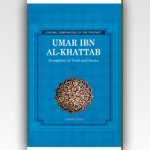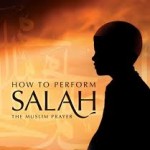Al-Masjid an-Nabawi (The Prophet’s Mosque)
Because there was no masjid, or mosque, in Medina, in the beginning, congregational Prayer was performed in whichever place our Prophet happened to be. Now, there was a need for a masjid, a place in which the believers would gather, share verses from the Qur’an, perform Prayers, listen to the Messenger of Allah and find solutions to daily issues. There was a piece of land in which our Prophet’s camel, Qaswa, had stopped and kneeled down, the very first day that the Messenger of Allah had entered Medina. After a short period of time, this piece of land was bought from their owners, and a masjid was built there. Our most beloved Prophet himself worked hard in the construction of the masjid, being the best example for the Muslims. One of his Companions saw him carrying the adobe bricks and said, “Give them to me, let me carry them for you.”
“You are no more in need of Allah’s mercy than I am,” had been his reply. Rooms for the Messenger of Allah and his family had been constructed right next to the masjid. A new pulpit was constructed a short while after the construction of the masjid had been completed. Before that, our Prophet had been delivering his sermons whilst resting his arms on the stump of a date tree. The new pulpit was now standing over this tree stump. One day, while our Prophet was delivering his sermon, the tree stump starting sobbing and making noises like that of the bellow of a camel. All those present in the masjid had clearly heard this sound. Our Prophet asked the dried-up stump why it was crying and the stump answered that it was because of its separation from the Messenger of Allah. Our Prophet silenced its sobs, consoling it and giving it the glad tidings that it would continue its life in Paradise. When the stump had quieted down, the Prophet of compassion turned to his Companions and said, “If I had not shown love for the stump and consoled it so, it would have continued to cry like this until the Day of Judgment.” Then, with our Prophet’s orders, this date tree stump was buried underneath the newly-made pulpit.
From then on, the five Daily Prayers were performed in congregation inside this newly-constructed masjid. The Messenger of Allah was this masjid’s first and continuous leader in Prayer, orator and preacher. The duty of calling the believers to Prayer was given to Bilal al-Habashi from the very first day. Before, the Muslims would gather in front of the masjid at the Prayer times, which they would appoint according to the position of the sun. Because they estimated the Prayer times, the congregational Prayers weren’t completely in order. Until then, the Muslims used to call one another to the Prayer with the words “As-salah, as-salah!” (Come to the Prayer, come to the Prayer!) or “As-salatu jami’ah!” (Gather for the Prayer!). However, such a call was not sufficient. Those living further away from the masjid had difficulty hearing the call and were thus late in joining the Prayers. One day, our Prophet gathered his Companions and consulted with them about what kind of system they could develop to call all the believers to Prayer. The Companions offered many suggestions. Let’s use a gong, or blow a horn; let’s light a fire, they suggested. Our Prophet did not accept any of these suggestions, though. The meeting ended without them being able to reach an all-around decision. On one of these days, Abdullah ibn Zayd saw an interesting dream. When it was morning, he rushed to our Prophet and told him about his dream. “Last night in my dreams, a man came to me, dressed in green. He had a big bell in his hand. I asked him if he would sell the bell to me.
“What will you do with it,” he asked.
“I will call people to Prayer with it,” I answered. “Would you like me to tell you of something that is much better,” he asked in response.
“What is it,” I replied. He turned in the direction of the qiblah, towards the Ka’ba, and started to recite,
“Allahu Akbar, Allahu Akbar, Allahu Akbar, Allahu Akbar (Allah is the Greatest, Allah is the
Greatest, Allah is the Greatest, Allah is the Greatest)
Ashhadu an la ilaha illallah (I bear witness that there is no deity except the One Allah)
Ashhadu an la ilaha illallah (I bear witness that there is no deity except the One Allah)
Ashhadu anna Muhammadan Rasulullah (I bear witness that Muhammad is the Messenger of Allah)
Ashhadu anna Muhammadan Rasulullah (I bear witness that Muhammad is the Messenger of Allah)
Hayya alas-Salah, Hayya alas-Salah (Come to Prayer, come to Prayer)
Hayya alal-Falah, Hayya alal-Falah (Come to success, come to success (in this life and in the
Hereafter))
Allahu Akbar, Allahu Akbar (Allah is the Greatest, Allah is the Greatest)
La ilaha illallah (There is no deity but the One Allah)”
Many other Companions had seen similar dreams that same night. Yet there was no difference in the call to Prayer that was taught to each one. Umar ibn al-Khattab was also among the ones that had seen the dream. After listening to all the Companions one by one, he turned to Abdullah ibn Zayd and said, “Teach Bilal what you have seen and let Bilal be the one to call the believers to Prayer, for his voice is stronger than yours.” When it was Prayer time, Bilal climbed to the highest point in Medina and, with his strong voice, delivered the very first call to Prayer.
Our Prophet moved out of Abu Ayyub al-Ansari’s home as soon as the construction of the Masjid an-Nabawi and the rooms next to it were completed. He and his daughters started living in the rooms that had been made for them. After a short period of time, Allah’s Messenger and Abu Bakr’s daughter Aisha’s wedding took place. They had been engaged in Mecca, shortly before the Emigration, and their wedding had been postponed for later on. After the wedding, Aisha, may Allah be pleased with her, moved into the Blissful Household of Allah’s Messenger. A new period in our Prophet’s family life had begun.
Related Posts
- February 20, 2014
- 0 Comment









